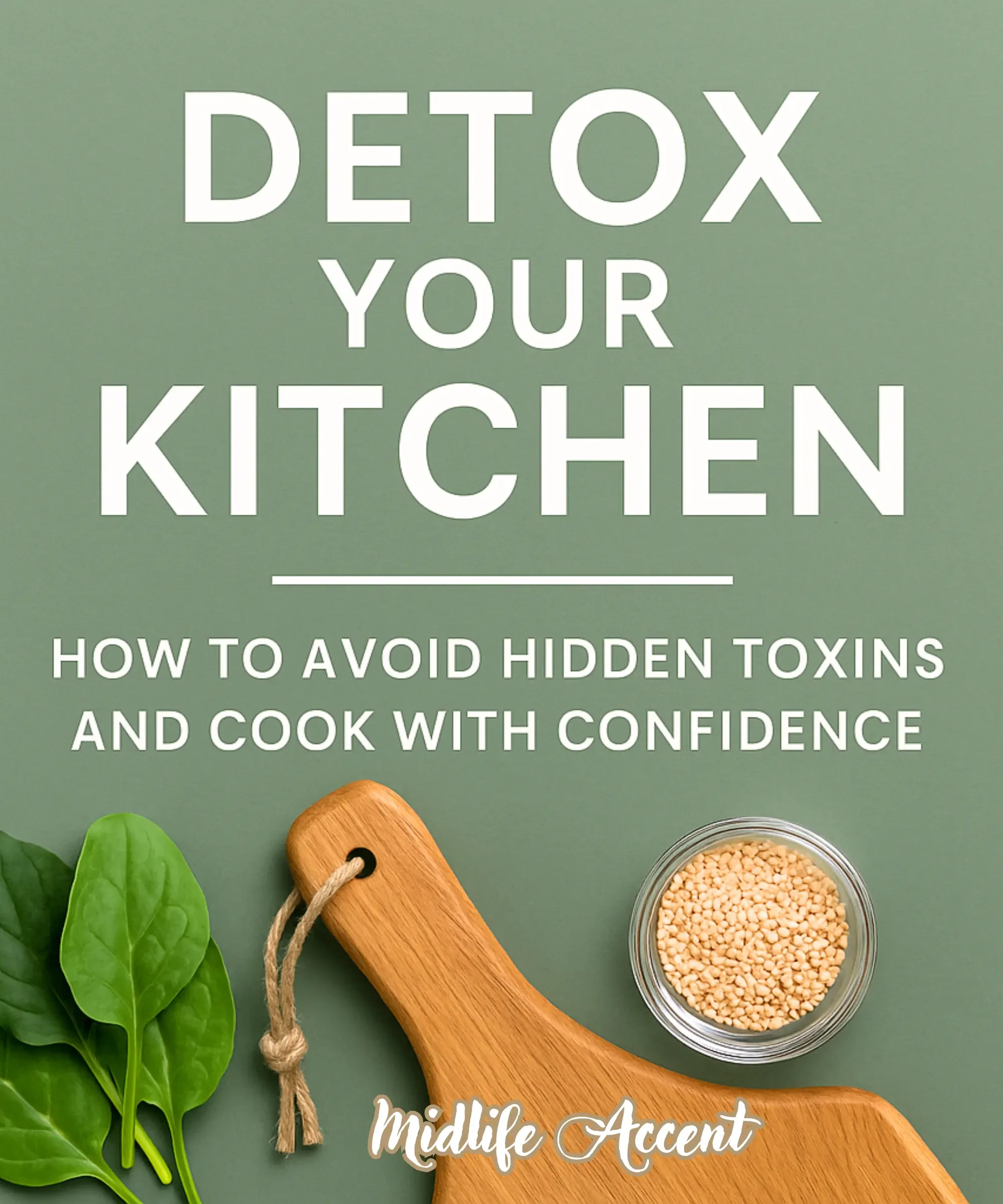Detox Your Kitchen | Avoid Toxins and Cook with Confidence
Where Wellness Begins
Your kitchen should be the safest place in your home—the sanctuary where health is plated and love is served. Yet, hidden among the cutting boards, food containers, and gleaming cookware, there are often quiet intruders. PFAS, BPA, VOCs, phthalates—these “forever chemicals” and toxins don’t knock on the door, but they still find a seat at the table.
The truth is: what feels harmless—a plastic container, a fragrant cleaner, a nonstick pan—can be the very thing that chips away at your health. The good news? You don’t need to overhaul your life or spend thousands to reclaim your kitchen. With mindful swaps and small rituals, you can cook with clarity and confidence.
This is your kitchen detox guide—a practical, empowering path to reduce hidden toxins and build a kitchen that nourishes, not nags.
The Hidden Toxins Lurking in Your Kitchen
Nonstick Cookware (PFAS, PFOA, PTFE)
That slick, easy-to-clean frying pan may hide “forever chemicals” that don’t break down in your body or the environment. Over time, scratches and high heat can release toxic fumes.
Plastic Food Containers (BPA & Phthalates)
Storing leftovers in plastic? Warm them up in the microwave, and chemicals may leach into your food, especially acidic dishes like tomato sauces.
Fragrance-Heavy Cleaners (VOCs)
That lemon-scented spray or lavender countertop cleaner? Often packed with volatile organic compounds (VOCs) that pollute your indoor air and irritate lungs.
Plastic Cutting Boards & Utensils (Microplastics)
Each slice and dice can release microplastic particles that end up in your meal—and eventually in your body.
Foils & Wraps (Aluminum & Plastic Films)
Cheap foil and plastic wraps can leach chemicals at high heat or when covering acidic foods.
Swap It, Don’t Stress It
Here are simple swaps that can change your kitchen (and your health) for the better:
Ditch Teflon & Cheap Nonstick
Switch to Stainless Steel, or Ceramic. Stainless steel is durable, and ceramic is naturally non-toxic. See also 9 Best Non-Toxic Air Fryers of 2025
Plastic Storage
Glass Jars, Mason Jars, Stainless Steel. Affordable, stylish, and chemical-free. Perfect for meal prep. Check this stainless steel food containers.
Chemical Cleaners
DIY Natural Solutions. Vinegar, baking soda, lemon juice, and essential oils can clean as powerfully as synthetic sprays—without the toxins.
Plastic Cutting Boards
Bamboo or Wood Boards. Durable, beautiful, and far safer. Just remember to oil them occasionally for longevity.
Plastic Wrap
Beeswax Wraps or Silicone Bags. Eco-friendly, reusable, and toxin-free.
Grab my FREE Recommended Product List inside the Wellness Vault — it’s filled with non-toxic swaps, trusted cookware, and kitchen tools that actually make clean living easier (and prettier). 🍋🌿
👉 Sign up or log in to the Wellness Vault to download it now!
Everyday Rituals for a Toxin-Free Kitchen
Ventilate: Open windows, use exhaust fans.
Filter: Tap water can carry chlorine, fluoride, and microplastics. Even a basic carbon filter can reduce your exposure.
Declutter Your Gadgets: Fewer gadgets = fewer plastic, fewer worries.
Read Labels: “Fragrance-free,” “BPA-free,” “PFAS-free” are your allies. If a product doesn’t say it, assume it’s not.
The Confidence Factor
Detoxing your kitchen isn’t about fear—it’s about freedom. Every glass jar you choose over plastic, every stainless steel pan you cook in instead of a Teflon one, every natural cleaner you spray—it’s all a quiet rebellion against hidden harm.
You’re not just swapping products. You’re rewriting your story: one where you feed your family without worry, where your home breathes easier, and where your meals feel as healing as they taste.
Conclusion: Cook with Clarity, Live with Lightness
Your kitchen is more than a room with an oven—it’s where your health begins, where your body is fueled, and where daily rituals ripple into lifelong wellness. By swapping hidden toxins for safe, trusted alternatives, you reclaim not just a space, but a sense of peace.
So go ahead—fry in stainless steel, store in glass, wipe with vinegar, and wrap with beeswax. Let your kitchen be the heart of health, not the source of hidden harm. Because cooking with confidence is the truest recipe for a vibrant life.
Your kitchen tells a story—and now, you’re rewriting it. I’d love to hear yours! What’s one small swap you’ve made (or want to make) for a healthier, toxin-free kitchen? Share in the comments—I read every one.”
Disclosure:
This website contains affiliate links. As an Amazon Associate and participant in other affiliate programs, I may earn a commission from qualifying purchases. This comes at no additional cost to you. I only share products and services I genuinely believe in and think may be useful for my readers.

